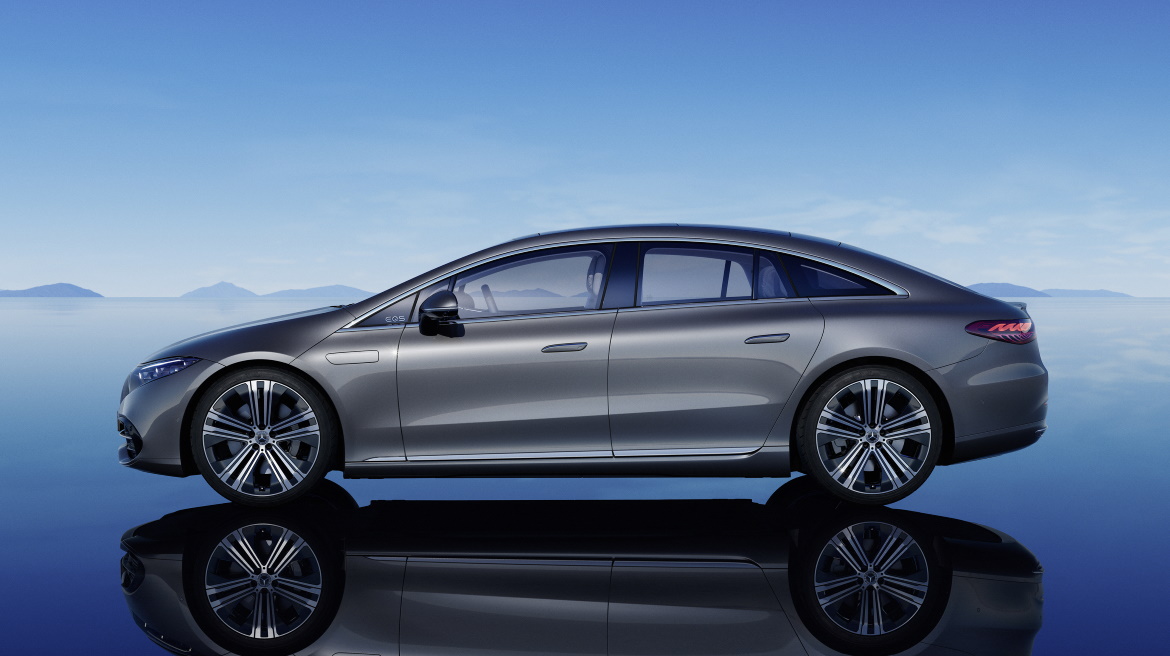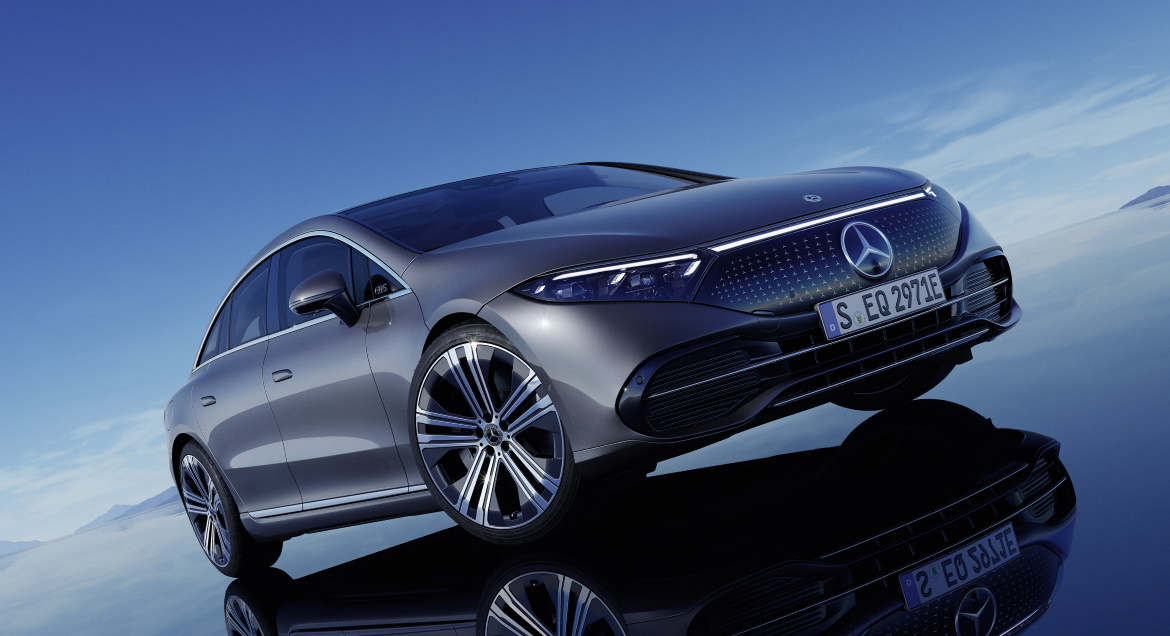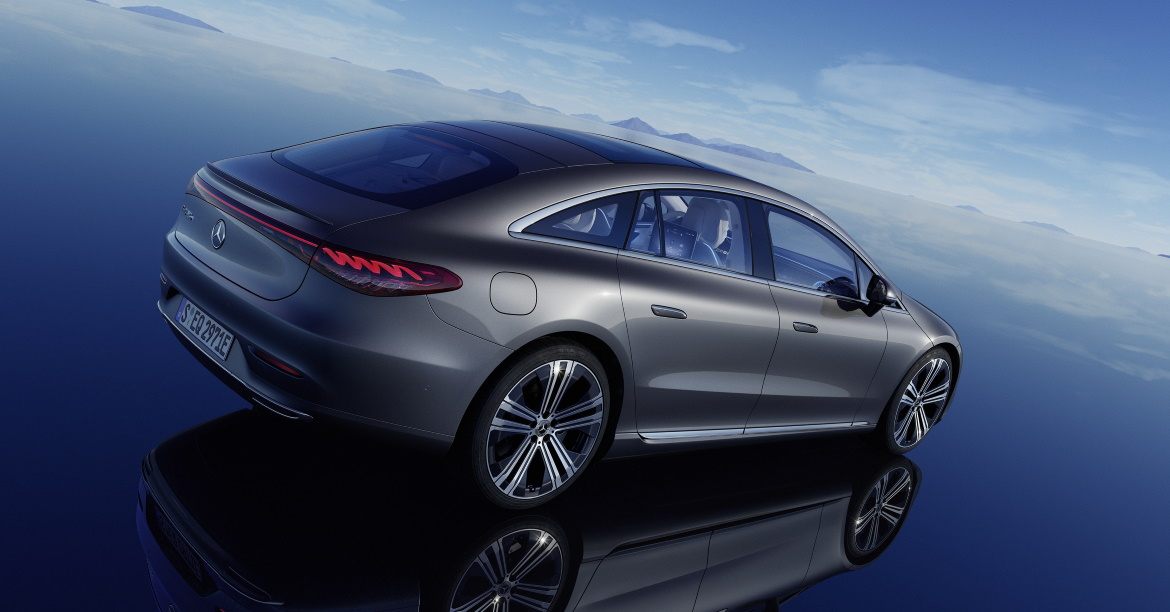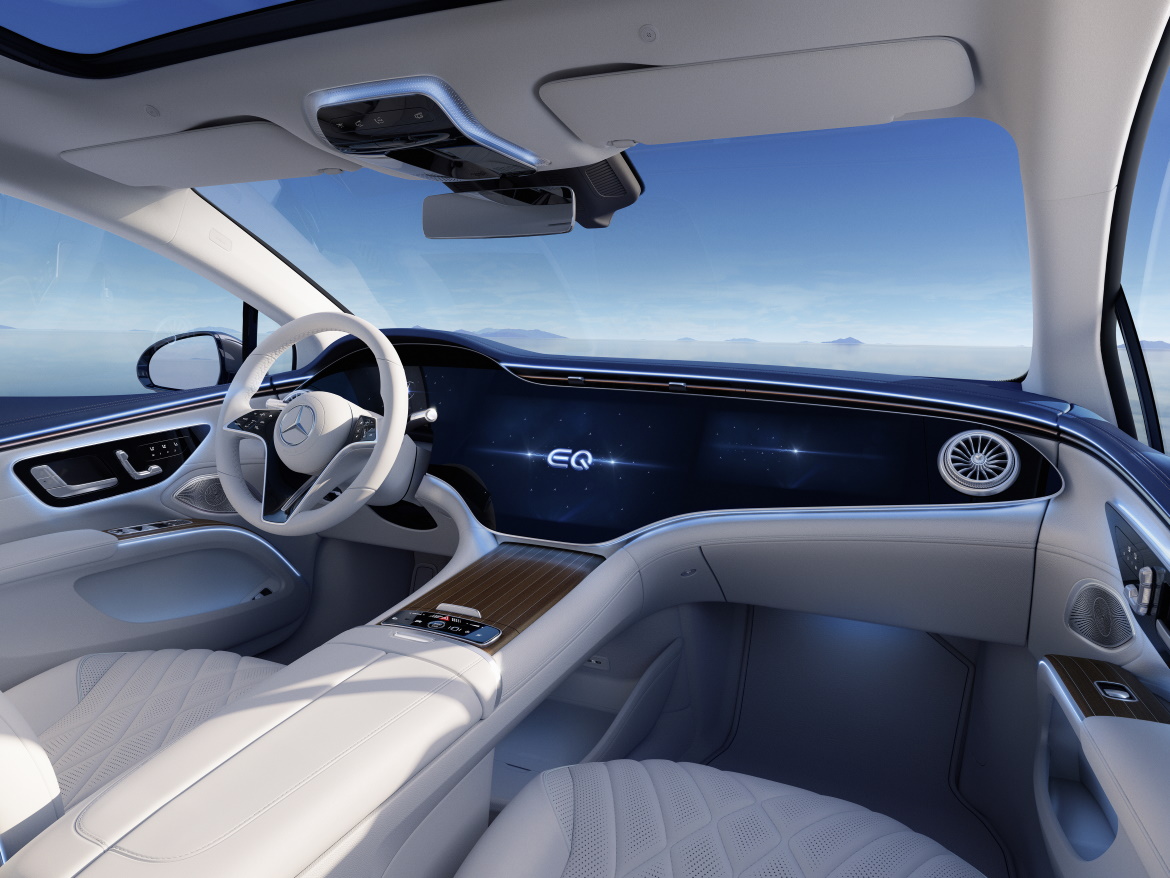“With the EQS we have created a brand new generation of luxury cars of the future”. These are the words of Gorden Wagener, head of design at Daimler Group, describing the German manufacturer’s new electric flagship, which debuts a new platform, the EVA, exclusively dedicated to zero-emission luxury cars. The architecture has allowed the EQS to enjoy all the benefits in terms of form and space utilisation of an electric-only platform. The EQS is equipped at launch with a 107.4 kWh battery pack positioned in the floor pan for a range of 770 kilometres.
From the very first glance, the EQS impresses with its proportions: 5.2 metres long, 19 metres wide, 1.5 metres high and a record 3.2 metre wheelbase, all to the benefit of interior roominess. The overhangs are decidedly short and the front end points downwards. Completely devoid of edges, the EQS is designed by a single line that starts at the front and goes all the way to the rear: “Important elements, such as the ‘one bow’ design and the fully integrated, continuous shape with reduced lines, give the EQS its sporty, modern look. This sets the car apart from all the other models we have created so far, making it even more extraordinary,” Wagener continues.
A softness of shape and volume that has enabled us to achieve an air resistance coefficient of 0.20. The changes also concern the cabin, which has been designed with an advanced layout: the base of the A-pillar has been moved forward and the C-pillar has been set particularly far back, creating a large passenger compartment. “The study of the exterior started with the F015 concept car in 2015 and then a competition began between all our style centres that led to the definition of the final deisgn”, says Steffen Kohl, head of Mercedes-Benz’s Advanced Design department since 2008.
While the exterior impresses with its highly innovative proportions, the interior takes passengers into the future. The optionally available MBUX Hyperscreen is the most obvious expression of this: the entire instrument panel consists of three curved screens integrated into a single element 56 inches wide, an option that dictates the aesthetics of the entire dashboard and cabin. Above the panel extends the turbine-shaped vent strip. “Initially, we thought of eliminating the central tunnel that joins the console to the dashboard, but then ergonomics prevailed and we decided to extend the screen downwards and connect the two elements with a tunnel,” says Peter Balko, head of interior design.















